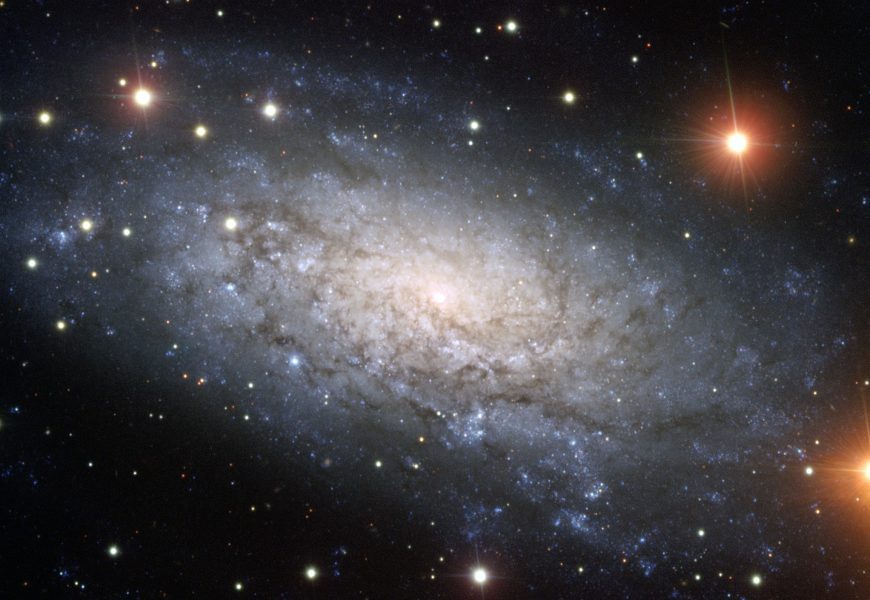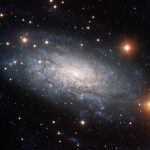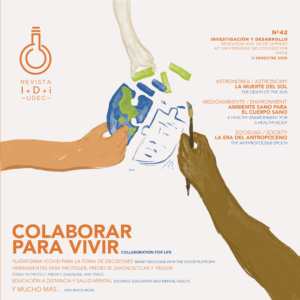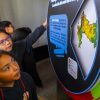By: Celeste Burgos Badal, Journalist – Astronomy Department UdeC / ceburgos@udec.cl
Images: Courtesy of Darío Arellano
Leer en español
Galaxies, those huge and beautiful astronomical structures that group stars, gas, dust and dark matter, and of which we are part as humanity, are the object of study of the Millennium Nucleus for Galaxies (MINGAL, in Spanish), an initiative formed by scientists from five universities: Santa María, Valparaíso, Diego Portales and Andrés Bello, and led by the University of Concepción. MINGAL also has the support of the renowned scientist Reinhard Genzel, who won the Nobel Prize in Physics in 2020 and is a researcher at the Max Planck Institute for Extraterrestrial Physics.
MINGAL is led by Dr. Rodrigo Herrera Camus. It is the only Millennium Nucleus dedicated to studying the evolution of galaxies. “Chile not only has the best observatories in the world, but also a group of highly trained astronomers. This project will allow us to explore the frontiers of science, using the best technology available and working alongside leading international institutions,” says Dr. Herrera, a Research Associate at the Center for Astrophysics and Related Technologies (CATA, in Spanish).
This initiative seeks to explore the mysteries of the universe by combining state-of-the-art simulations, artificial intelligence tools, and high-tech telescopes such as ALMA, located in the Atacama Desert, and the future Extremely Large Telescope (ELT), which will allow observing the cosmos with unprecedented precision.
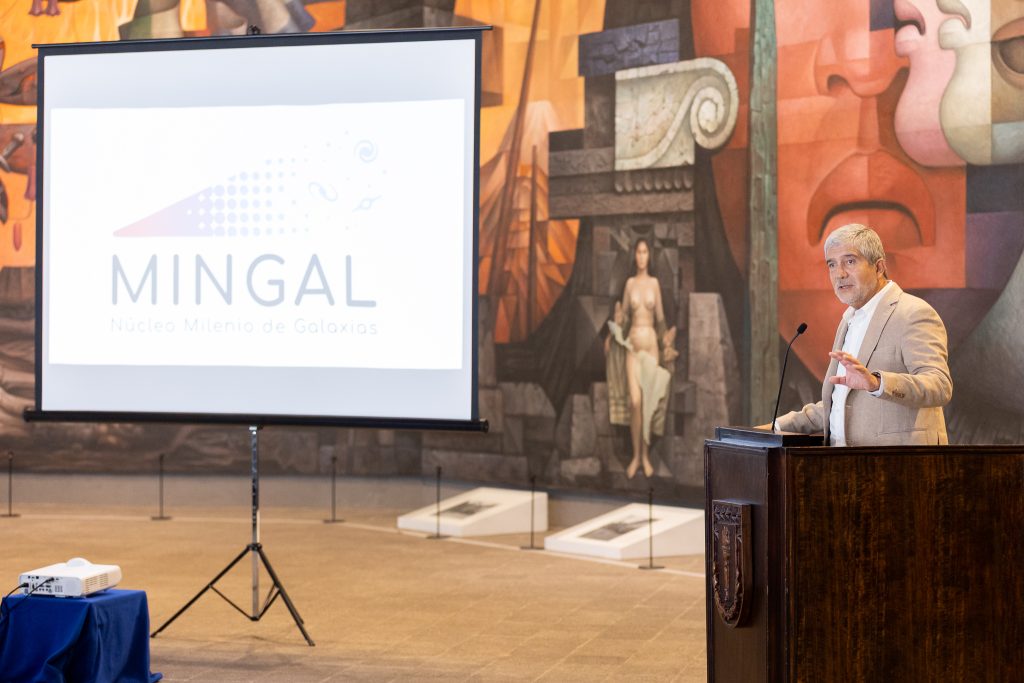
Understanding the rich diversity of galaxies to understand the formation of the Universe better
Images of galaxies are beautiful and surprising, thanks to instruments such as the James Webb Space Telescope, which captivate the curiosity of society and astronomers. Despite their diversity of shapes and colors, all galaxies were born as clouds of gas, dust, and dark matter; from that point, MINGAL seeks to understand how these clouds evolved to form galaxies like our Milky Way. “Galaxies are like the bricks that build a house,” says Dr. Herrera. “This house is the Universe; understanding how they were formed connects to the origin of the Universe, with key properties such as energy and dark matter that are true mysteries.”
Dr. Guillermo Cabrera, an academic from the UdeC Faculty of Engineering, will provide Artificial Intelligence to train models and thus estimate morphologies and astrophysical parameters of galaxies. “I hope that this project will help articulate interdisciplinary research to understand the universe’s evolution,” says MINGAL’s principal investigator.
Dr. Yara Jaffé, alternate director of MINGAL, explains that studying galaxies is key to understanding the Universe. “Thanks to MINGAL, we will be able to move forward on some fundamental questions about its evolution, combining the exquisite observations of the sky with artificial intelligence and computational modeling tools.”
Connecting with the citizenry
This project also seeks to contribute to outreach to the community. Thus, Dr. Jaffé presented a workshop for Valparaíso teachers, providing tools to share with her students. “They are knowledge multipliers that we hope will get involved in citizen science.” On the other hand, Dr. Herrera developed the “Curved or Flat” exercise, which measures the Earth’s curvature: “We are convinced that holding workshops dedicated to teachers will have a very positive and multiplier impact. Our idea is to replicate it in many regions of Chile.” The event also had the participation of the director of the TITANs Millennium Core, Dr. Neil Nagar, who taught the teachers how to make measurements of water vapor in the atmosphere.
MINGAL also leads the initiative “Looking for Jellyfish Galaxies”, which invites citizens to contribute to observing and processing information about galaxies. It is a platform that presents more than 10,000 images, so that people can identify those galaxies that, due to disturbances, have “tails” or “tentacles” of gases and material. This makes it possible to train the AI models with which researchers will study galaxies, so citizen participation is crucial.
“We are happy. We are bringing a lot of good news from the universe. We want to be spokespeople for some of the most beautiful discoveries in the cosmos,” concludes Dr. Herrera.
Helps astronomers identify “jellyfish” galaxies in astronomical observations
Last modified: 3 de septiembre de 2025
